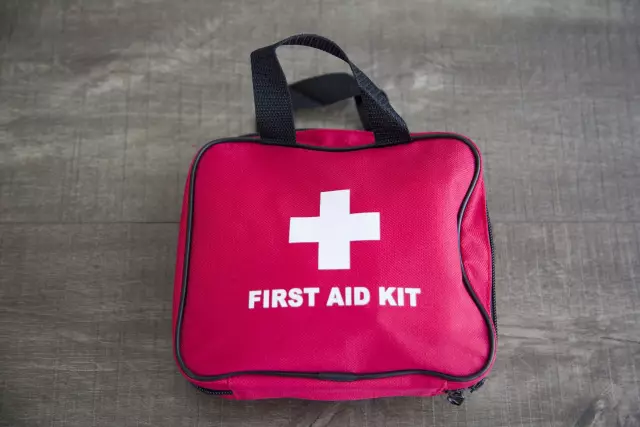- Author Curtis Blomfield [email protected].
- Public 2023-12-16 20:44.
- Last modified 2025-01-23 17:01.
Rib fractures are the most common chest injuries. The elderly are especially susceptible to them. Their ribs have less elasticity and do not tolerate deformations as well as younger ones. Rib fractures are of the following types:
- cracks;
- subperiosteal;
- full.
Cracks are the easiest.

Mechanisms of injury development
As a rule, people break 5-8th ribs. Less often - 11 and 12th. This is due to the different level of mobility of the distal ends. With direct injuries caused by small angular hard objects, a limited section of the costal arch breaks. Usually, a fracture occurs directly at the site of the impact of the traumatic force. First, the inner surface of the rib breaks, and then the outer.

If a significant force acts on larger sections of the arc, then they break out and are pressed inward. Such fractures are called double or fenestrated. As a rule, these injuries are accompanied by ruptures of the pleura, muscles, and blood vessels. If a mechanical force acts on a large areaarea, then a movable zone is formed in the chest, which is called the "costal valve". A complete fracture of the ribs usually provokes the displacement of bone fragments. When exhaling, their entry is observed, and when inhaling, they straighten. With such injuries, ruptures of the pleura and lungs often occur with pneumothorax, hemothorax, subcutaneous emphysema, and hemoptysis. It should be understood that a severe fracture of the ribs may well lead to death. Treatment at home is possible only for minor injuries (if the doctor allows). For example, cracks or fractures no more than 1-2 ribs.
Symptomatology and diagnosis
Rib fractures are characterized by sharp pain at the site of injury. It gets stronger with deep breaths and coughing. Patients try to breathe shallowly, but often. They are forced to occupy the optimal position, which provides the damaged area with maximum peace. With such injuries, a symptom of an interrupted breath appears. A person tries to inhale very slowly, but deeply, but after the appearance of a sudden sharp pain, he stops the process. On palpation, there is local tenderness, and sometimes crepitus. However, the latter is not observed in places of fractures of the cartilaginous sections of the ribs. With multiple fractures, cardiorespiratory disorders are often noted, as well as symptoms of damage to internal organs. This can lead to the development of respiratory failure. As a rule, during external examination, there are:
- tachypnea;
- pale skin;
- sustained tachycardia;
- chest sinking(fragments);
- cyanosis;
- when breathing, asymmetric movements of the chest wall.
The severity of the patient's condition depends on the location of the injury and the number of broken ribs.

First Aid
The first priority is anesthesia. To do this, it is not necessary to give the patient analgesics or block the damaged area with them. Sometimes it is enough just to give the human body a comfortable position. Then you need to fix the chest as soon as possible. Because any careless movement not only causes pain, but also increases the likelihood of increased bleeding from damaged tissues. To stabilize the bone fragments of the chest, a circular fixing bandage is applied in case of a fracture of the ribs. It can be made from a bandage or improvised materials. Cotton-gauze pads should be placed on probable places where rib fractures occurred.






